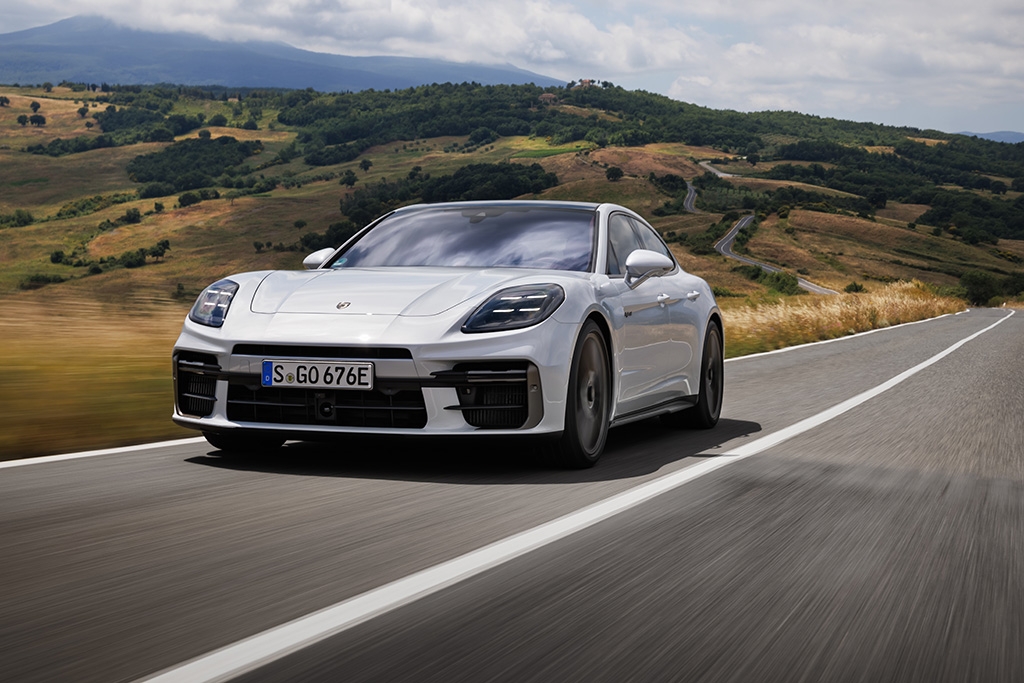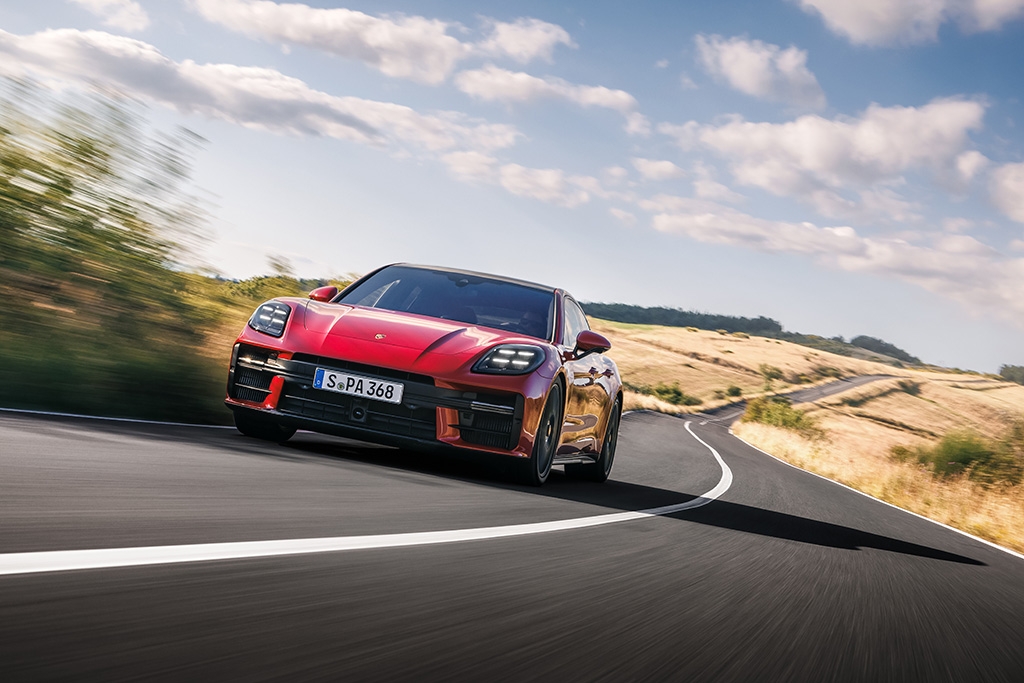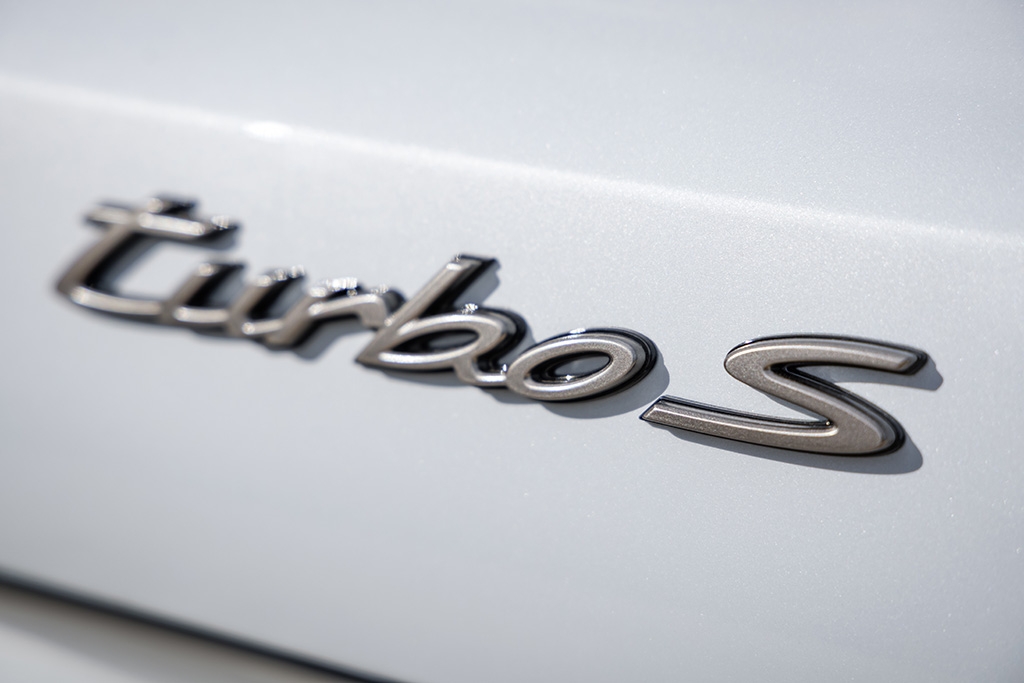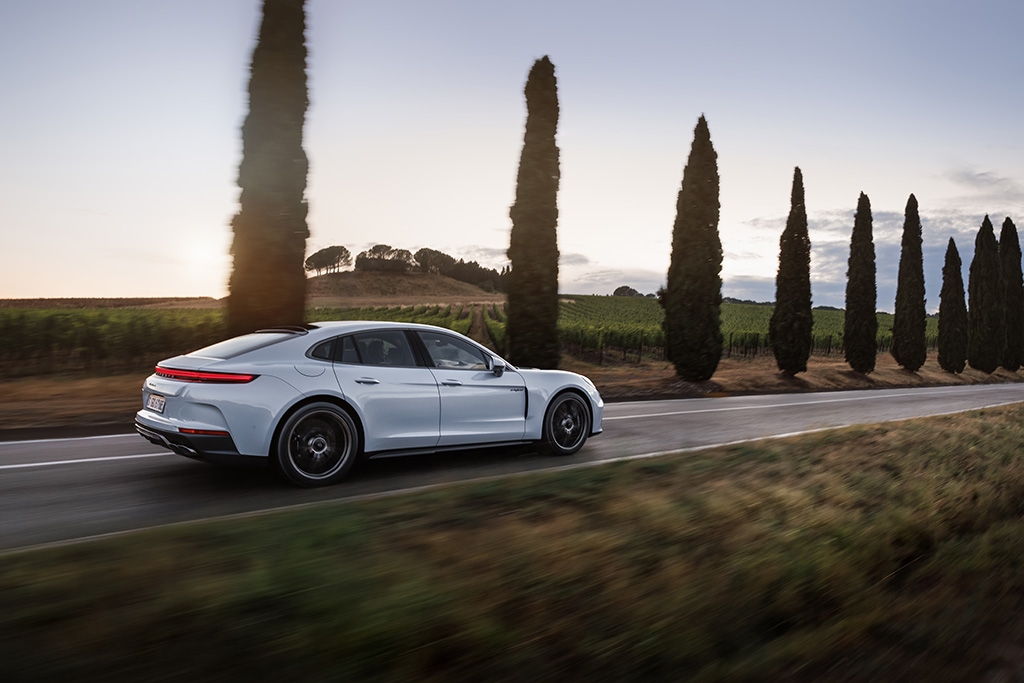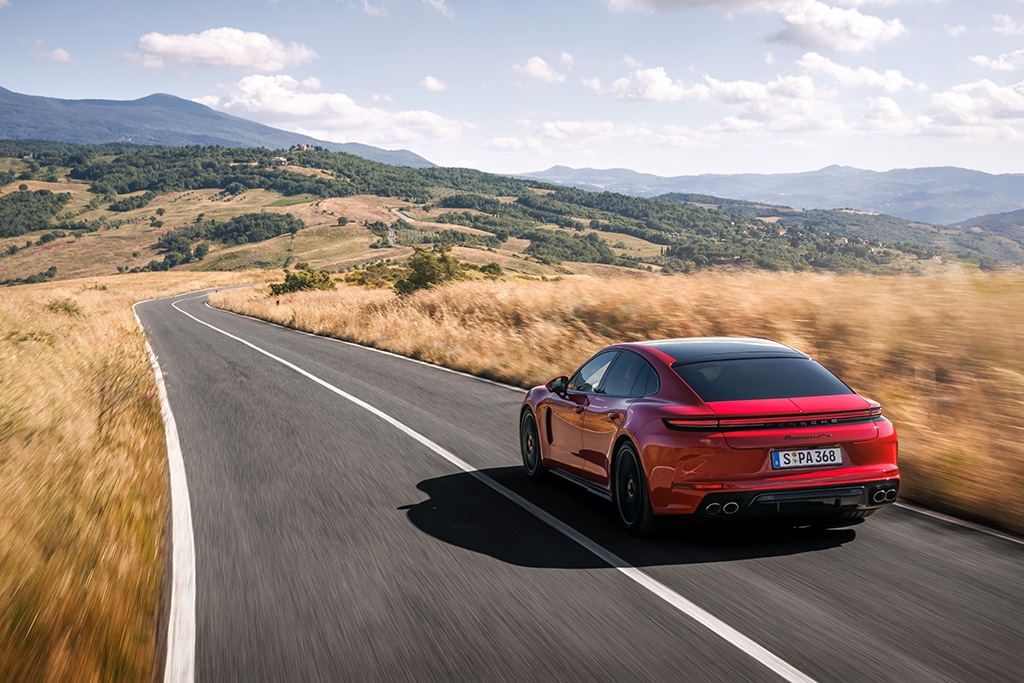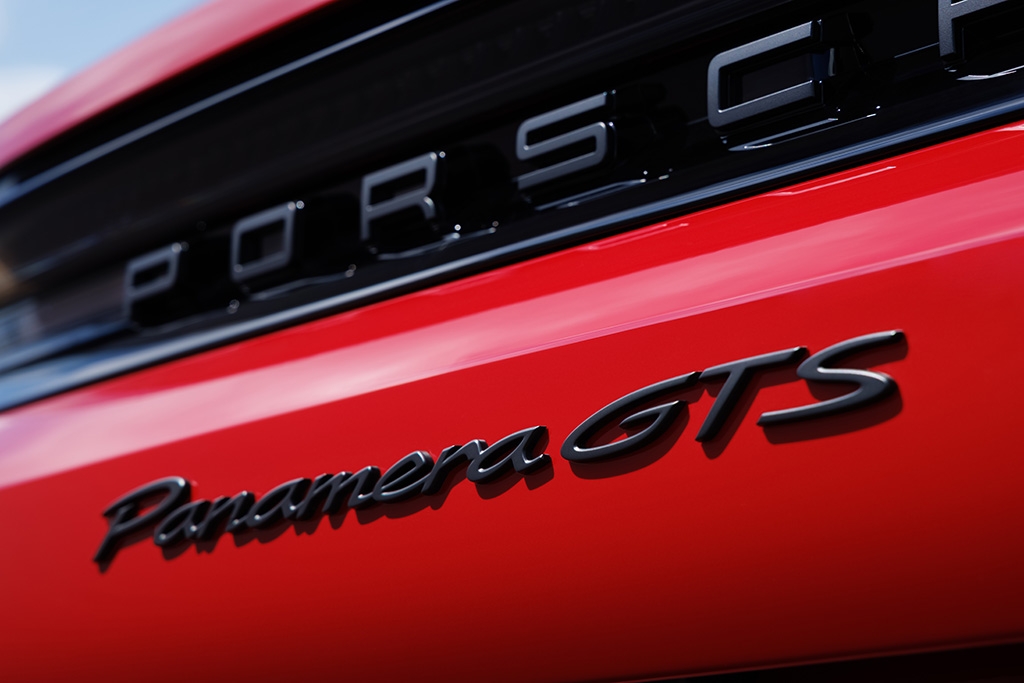Porsche unveils new Panamera GTS and Turbo S E-Hybrid
18 Jul 2024|499 views
Just a few days after proudly announcing that a "future top model" of the new Panamera lineup had clinched the title as the fastest luxury saloon around the Nurburgring Nordschleife, Porsche has officially revealed its record-making star in full: The all-new Panamera Turbo S E-Hybrid.
Still, it's not just this single flagship that Porsche has pulled the covers off, but another essential and 'purist' variant - the Panamera GTS - both of which have together now been dubbed the "dynamic peak" of the lineup. Whereas the Panamera GTS aims to deliver the most emotional driving experience to drivers, the Panamera Turbo S E-Hybrid has been marked out as the uncontested flagship, boasting the most power, speed and luxury.
The new, record-making Panamera Turbo S E-Hybrid (left; above) and Panamera GTS (right; below) have been dubbed the 'dynamic peak' of the family, with each variant bringing a different take of performance to the lineup
Expectedly, both the Panamera GTS and Turbo S E-Hybrid utilise a 4.0-litre biturbo V8 engine - which is what you'll already find in the Panamera Turbo E-Hybrid. (Expectedly - and quite delightfully - however, the GTS doesn't get any sort of electric assistance.)
This firecracker of an engine - which has been further developed by Porsche over the previous V8 used in the Panamera GTS and Turbo variants - now utilises a single rather than twin-scroll turbocharger, which Porsche says helps to shorten the warm-up phase of its catalytic converters, and increase the efficiency of the drive.
On top of upgrading the V8, Porsche also states that it has “fundamentally redesigned” its eight-speed Porsche dual-clutch transmission (PDK), which now has optimised power-transmitting surfaces and a higher thermal load capacity. Both of these qualities are key to helping it cope with the enormous drive torque of the Turbo S E-Hybrid.
On that note, the Panamera Turbo S E-Hybrid now marks the most powerful Panamera produced thus far, with its biturbo V8 and electric motor putting out 771bhp and an incredible maximum of 1,000Nm of torque in total.
These figures represent an increase of a quite-significant 101bhp and 150Nm over the previous Turbo S E-Hybrid. With this powertrain mated to the revised eight-speed PDK, the Panamera Turbo S E-Hybrid will shred up the century sprint just 2.9 seconds before going on to reach a top speed of 325km/h - again, representing enhancements of 0.5 seconds and 25km/h over its predecessor.
It’s not just more power, however, that the new Panamera Turbo S E-Hybrid is capable of, but better efficiency too.
A new 25.9kWh (gross) battery pack is said to be able to store 45% more energy than the previous one, giving the car a WLTP-rated range of up to 88km. At the same time, its maximum recuperative ability has also shot up to 88kW, while an 11kW AC charger will see it fully recharged in under three hours.
As the flagship, expect the Panamera Turbo S E-Hybrid to be fully kitted out too. Notably, the car will get Porsche's innovative Porsche Active Ride (PAR) as standard.
The groundbreaking chassis tech relies on four individual shock absorbers with electrically operated hydraulic pumps that can actively generate force in rebound or compression directions - helping the suspension to (almost) fully compensate for body movements (this also helps to keep the car essentially level under more dynamic driving).
Thus far, we've only seen PAR on both the Panamera and facelifted Taycan lineups - and Porsche is quick to note that this is only technically feasible on E-Hybrid variants of the Panamera (in other words, just the Turbo and Turbo S) thanks to the 400V high-voltage system integrated into the chassis of both variants.
Expectedly, the Turbo S E-Hybrid will come with all of the latest bling that marks out Porsche's Turbo models too.
A distinctive front end and rear bumper in the car's exterior colour will form part of the first signs marking out the Turbo S E-Hybrid. But it also gets other specific flashes of colour - yellow brake callipers on its standard Porsche Ceramic Composite Brakes (PCCB), and of course, Turbonite, the metallic grey tone that Porsche is exclusively using to mark out its Turbo models. Apart from its forged 21-inch rims, front airblades and rear bumper, you'll also find Turbonite splashed across bits of the Turbo S E-Hybrid's interior.
By a different token of performance, Porsche is marking out the Panamera GTS ('Gran Turismo Sport', in case you're new) as the most agile variant of the range.
Even without electric assistance, the twin-turbo V8 in the Panamera GTS is monstrous in its own right, and can churn out an impressive 493bhp - or a good 20bhp more than the unit in its predecessor. Porsche states that the engine offers linear power delivery that doesn't taper off even when your tacho has gone past 6,000rpm.
The sedan is quick to the century mark too, taking just 3.8 seconds (before hitting a top speed of 302km/h), but that's not entirely where the drama lies. Instead, the Panamera GTS is also fitted with a standard sports exhaust system that was developed to create a "powerful, emotional soundscape".
The GTS continues to come with dual-chamber two-valve air suspension (inclusive of PASM) as standard, but here, Porsche states that it has tuned the setup to be "particularly sporty" - with the car lowered by 10mm. Reinforced anti-roll bars help to lower basic spring rate, while Porsche's electronically controlled, fully variable PTV Plus (Porsche Torque Vectoring Plus) helps distribute torque optimally between the car's wheels.
Externally, the Panamera GTS is also - as with all GTS models - marked out not just by its unique front section, but also its specific, sporty design cues. Specifically, giving the saloon its 'brooding' character are a host of darkened or blacked out parts all over: Black GTS logos on its sides and rear, dark-tinted HD matrix LED head lights and taillights, and even body trim elements such as the side skirts and rear bumper in satin-matt Black (part of the standard Sport package). Contrasting against them are the car's red brake callipers, while the Panamera GTS also gets the same Dark Bronze-coloured tailpipes as the Turbo S E-Hybrid.
If you're already keen on getting your hands on these dynamic peaks of the Panamera range, you won't have to wait long - although you'll definitely need to have deep enough pockets.
Deliveries in Singapore for both models will commence towards the end of 2024, with estimated prices for the Panamera GTS starting at $922,268, and at a whopping $1,230,268 for the Panamera Turbo S E-Hybrid (both without COE).
Just a few days after proudly announcing that a "future top model" of the new Panamera lineup had clinched the title as the fastest luxury saloon around the Nurburgring Nordschleife, Porsche has officially revealed its record-making star in full: The all-new Panamera Turbo S E-Hybrid.
Still, it's not just this single flagship that Porsche has pulled the covers off, but another essential and 'purist' variant - the Panamera GTS - both of which have together now been dubbed the "dynamic peak" of the lineup. Whereas the Panamera GTS aims to deliver the most emotional driving experience to drivers, the Panamera Turbo S E-Hybrid has been marked out as the uncontested flagship, boasting the most power, speed and luxury.
The new, record-making Panamera Turbo S E-Hybrid (left; above) and Panamera GTS (right; below) have been dubbed the 'dynamic peak' of the family, with each variant bringing a different take of performance to the lineup
Expectedly, both the Panamera GTS and Turbo S E-Hybrid utilise a 4.0-litre biturbo V8 engine - which is what you'll already find in the Panamera Turbo E-Hybrid. (Expectedly - and quite delightfully - however, the GTS doesn't get any sort of electric assistance.)
This firecracker of an engine - which has been further developed by Porsche over the previous V8 used in the Panamera GTS and Turbo variants - now utilises a single rather than twin-scroll turbocharger, which Porsche says helps to shorten the warm-up phase of its catalytic converters, and increase the efficiency of the drive.
On top of upgrading the V8, Porsche also states that it has “fundamentally redesigned” its eight-speed Porsche dual-clutch transmission (PDK), which now has optimised power-transmitting surfaces and a higher thermal load capacity. Both of these qualities are key to helping it cope with the enormous drive torque of the Turbo S E-Hybrid.
On that note, the Panamera Turbo S E-Hybrid now marks the most powerful Panamera produced thus far, with its biturbo V8 and electric motor putting out 771bhp and an incredible maximum of 1,000Nm of torque in total.
These figures represent an increase of a quite-significant 101bhp and 150Nm over the previous Turbo S E-Hybrid. With this powertrain mated to the revised eight-speed PDK, the Panamera Turbo S E-Hybrid will shred up the century sprint just 2.9 seconds before going on to reach a top speed of 325km/h - again, representing enhancements of 0.5 seconds and 25km/h over its predecessor.
It’s not just more power, however, that the new Panamera Turbo S E-Hybrid is capable of, but better efficiency too.
A new 25.9kWh (gross) battery pack is said to be able to store 45% more energy than the previous one, giving the car a WLTP-rated range of up to 88km. At the same time, its maximum recuperative ability has also shot up to 88kW, while an 11kW AC charger will see it fully recharged in under three hours.
As the flagship, expect the Panamera Turbo S E-Hybrid to be fully kitted out too. Notably, the car will get Porsche's innovative Porsche Active Ride (PAR) as standard.
The groundbreaking chassis tech relies on four individual shock absorbers with electrically operated hydraulic pumps that can actively generate force in rebound or compression directions - helping the suspension to (almost) fully compensate for body movements (this also helps to keep the car essentially level under more dynamic driving).
Thus far, we've only seen PAR on both the Panamera and facelifted Taycan lineups - and Porsche is quick to note that this is only technically feasible on E-Hybrid variants of the Panamera (in other words, just the Turbo and Turbo S) thanks to the 400V high-voltage system integrated into the chassis of both variants.
Expectedly, the Turbo S E-Hybrid will come with all of the latest bling that marks out Porsche's Turbo models too.
A distinctive front end and rear bumper in the car's exterior colour will form part of the first signs marking out the Turbo S E-Hybrid. But it also gets other specific flashes of colour - yellow brake callipers on its standard Porsche Ceramic Composite Brakes (PCCB), and of course, Turbonite, the metallic grey tone that Porsche is exclusively using to mark out its Turbo models. Apart from its forged 21-inch rims, front airblades and rear bumper, you'll also find Turbonite splashed across bits of the Turbo S E-Hybrid's interior.
By a different token of performance, Porsche is marking out the Panamera GTS ('Gran Turismo Sport', in case you're new) as the most agile variant of the range.
Even without electric assistance, the twin-turbo V8 in the Panamera GTS is monstrous in its own right, and can churn out an impressive 493bhp - or a good 20bhp more than the unit in its predecessor. Porsche states that the engine offers linear power delivery that doesn't taper off even when your tacho has gone past 6,000rpm.
The sedan is quick to the century mark too, taking just 3.8 seconds (before hitting a top speed of 302km/h), but that's not entirely where the drama lies. Instead, the Panamera GTS is also fitted with a standard sports exhaust system that was developed to create a "powerful, emotional soundscape".
The GTS continues to come with dual-chamber two-valve air suspension (inclusive of PASM) as standard, but here, Porsche states that it has tuned the setup to be "particularly sporty" - with the car lowered by 10mm. Reinforced anti-roll bars help to lower basic spring rate, while Porsche's electronically controlled, fully variable PTV Plus (Porsche Torque Vectoring Plus) helps distribute torque optimally between the car's wheels.
Externally, the Panamera GTS is also - as with all GTS models - marked out not just by its unique front section, but also its specific, sporty design cues. Specifically, giving the saloon its 'brooding' character are a host of darkened or blacked out parts all over: Black GTS logos on its sides and rear, dark-tinted HD matrix LED head lights and taillights, and even body trim elements such as the side skirts and rear bumper in satin-matt Black (part of the standard Sport package). Contrasting against them are the car's red brake callipers, while the Panamera GTS also gets the same Dark Bronze-coloured tailpipes as the Turbo S E-Hybrid.
If you're already keen on getting your hands on these dynamic peaks of the Panamera range, you won't have to wait long - although you'll definitely need to have deep enough pockets.
Deliveries in Singapore for both models will commence towards the end of 2024, with estimated prices for the Panamera GTS starting at $922,268, and at a whopping $1,230,268 for the Panamera Turbo S E-Hybrid (both without COE).
Latest COE Prices
December 2025 | 1st BIDDING
NEXT TENDER: 17 Dec 2025
CAT A$105,413
CAT B$123,900
CAT C$76,501
CAT E$123,000
View Full Results Thank You For Your Subscription.










